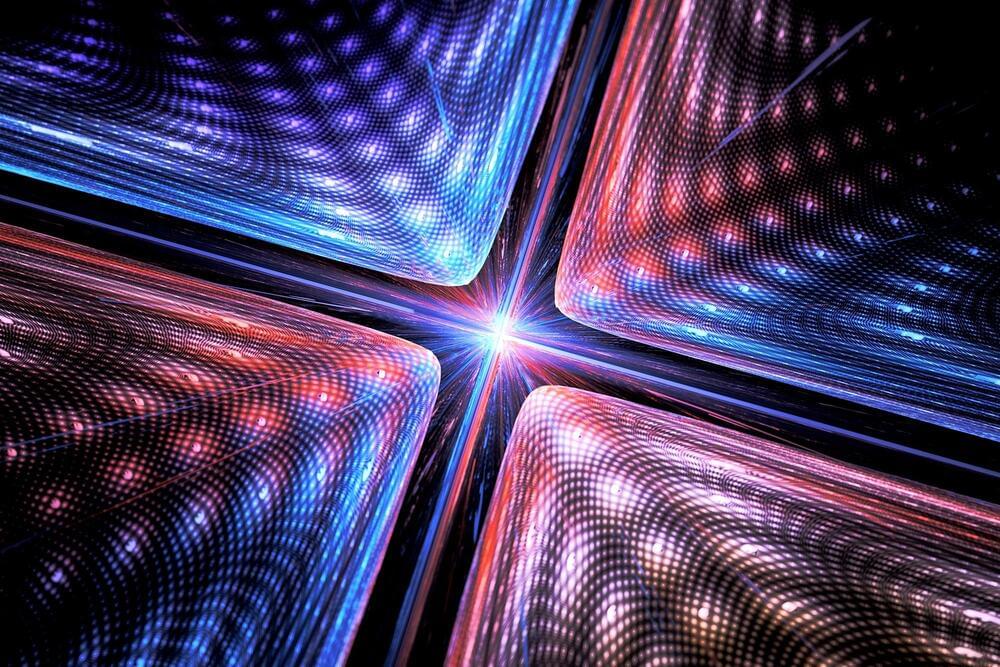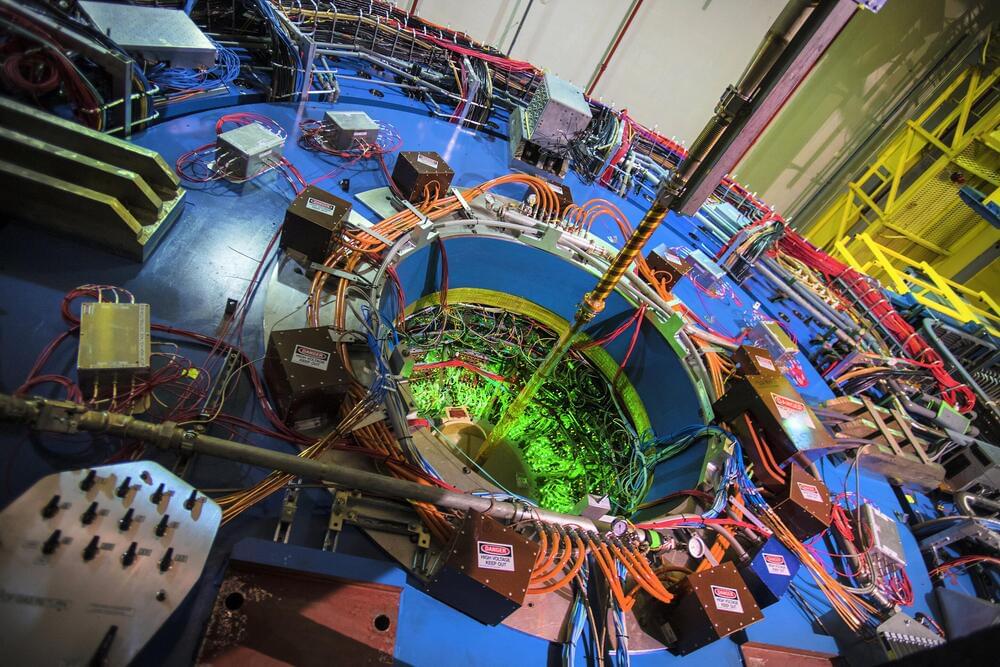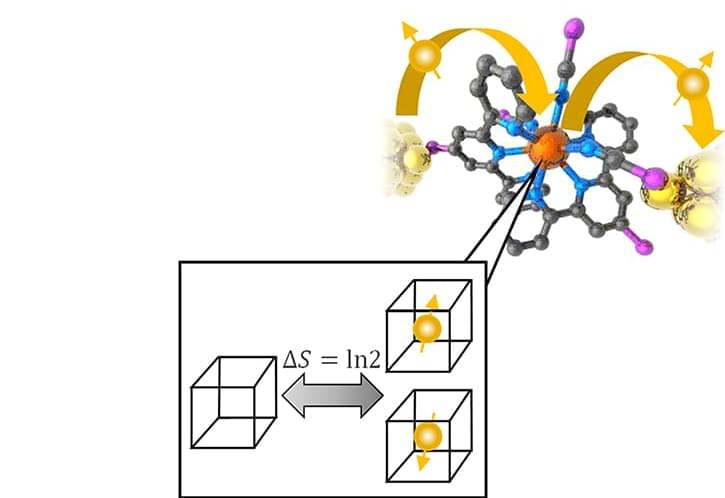Archive for the ‘quantum physics’ category: Page 309
Jan 5, 2023
Ten Tech Trends For 2023
Posted by Gemechu Taye in categories: biotech/medical, business, economics, quantum physics, robotics/AI
This past year, global attention has been focused on geo-strategic issues, such as the devastating war in Ukraine, which has dislocated many and caused immense suffering. Attention has also been focused on the recovery from the COVID pandemic, which was the overriding concern over the past three years. And finally, the economic destruction wrought by rapidly ramped interest rates which have targeted all sectors of the economy, particularly technology. But despite all this negativity, the business of building the future continues. There has been progress across major axes of computing, from visualization to AI and new types of processors (quantum).
With immense progress in technology, what might we look forward to in 2023?
Jan 5, 2023
Quantum Breakthrough: Light Source Produces Two Entangled Light Beams
Posted by Paul Battista in categories: computing, encryption, neuroscience, quantum physics
One potential application: Enhancing the sensitivity of atomic magnetometers used to measure the alpha waves emitted by the human brain.
Scientists are increasingly seeking to discover more about quantum entanglement, which occurs when two or more systems are created or interact in such a manner that the quantum states of some cannot be described independently of the quantum states of the others. The systems are correlated, even when they are separated by a large distance. Interest in studying this kind of phenomenon is due to the significant potential for applications in encryption, communications, and quantum computing.
Performing computation using quantum-mechanical phenomena such as superposition and entanglement.
Jan 5, 2023
Innovation strengthens electron-triggered light emissions for quantum-based computational and communications systems
Posted by Dan Breeden in categories: computing, nanotechnology, quantum physics, solar power, sustainability
The way electrons interact with photons of light is a vital part of many modern technologies, from lasers to solar panels to LEDs. But the interaction is inherently weak because of a major mismatch in scale: the wavelength of visible light is about 1,000 times larger than an electron, so the way the two things affect each other is limited by that disparity.
Now, researchers at The University of Hong Kong (HKU), MIT and other universities say they have come up with an innovative way to make more robust interactions between photons and electrons possible, that produces a hundredfold increase in the emission of light from a phenomenon called Smith-Purcell radiation. The findings have potential ramifications for both commercial applications and fundamental scientific research, although it will require more years of investigation to put into practice.
The findings are published in Nature by Dr. Yi Yang (Assistant Professor of the Department of Physics at HKU and a former postdoc at MIT), Dr. Charles Roques-carmes (Postdoctoral Associate at MIT) and Professors Marin Soljačić and John Joannopoulos (MIT professors). The research team also included Steven Kooi at MIT’s Institute for Soldier Nanotechnologies, Haoning Tang and Eric Mazur at Harvard University, Justin Beroz at MIT, and Ido Kaminer at Technion-Israel Institute of Technology.
Jan 5, 2023
New type of entanglement lets scientists ‘see’ inside nuclei
Posted by Dan Breeden in categories: biotech/medical, neuroscience, quantum physics
Nuclear physicists have found a new way to use the Relativistic Heavy Ion Collider (RHIC)—a particle collider at the U.S. Department of Energy’s (DOE) Brookhaven National Laboratory—to see the shape and details inside atomic nuclei. The method relies on particles of light that surround gold ions as they speed around the collider and a new type of quantum entanglement that’s never been seen before.
Through a series of quantum fluctuations, the particles of light (a.k.a. photons) interact with gluons—gluelike particles that hold quarks together within the protons and neutrons of nuclei. Those interactions produce an intermediate particle that quickly decays into two differently charged “pions” (π). By measuring the velocity and angles at which these π+ and π- particles strike RHIC’s STAR detector, the scientists can backtrack to get crucial information about the photon—and use that to map out the arrangement of gluons within the nucleus with higher precision than ever before.
“This technique is similar to the way doctors use positron emission tomography (PET scans) to see what’s happening inside the brain and other body parts,” said former Brookhaven Lab physicist James Daniel Brandenburg, a member of the STAR collaboration who joined The Ohio State University as an assistant professor in January 2023. “But in this case, we’re talking about mapping out features on the scale of femtometers —quadrillionths of a meter—the size of an individual proton.”
Jan 5, 2023
The Eccentricities of J. Robert Oppenheimer
Posted by Dan Breeden in categories: chemistry, cosmology, military, particle physics, quantum physics
The so-called “Father of the Atomic Bomb” J. Robert Oppenheimer was once described as “a genius of the nuclear age and also the walking, talking conscience of science and civilization”. Born at the outset of the 20th century, his early interests in chemistry and physics would in the 1920s bring him to Göttingen University, where he worked alongside his doctoral supervisor Max Born (1882−1970), close lifelong friend Paul Dirac (1902−84) and eventual adversary Werner Heisenberg (1901−76). This despite the fact that even as early as in his youth, Oppenheimer was singled out as both gifted and odd, at times even unstable. As a child he collected rocks, wrote poetry and studied French literature. Never weighing more than 130 pounds, throughout his life he was a “tall and thin chainsmoker” who once stated that he “needed physics more than friends” who at Cambridge University was nearly charged with attempted murder after leaving a poisoned apple on the desk of one of his tutors. Notoriously abrupt and impatient, at Göttingen his classmates once gave their professor Born an ultimatum: “either the ‘child prodigy’ is reigned in, or his fellow students will boycott the class”. Following the successful defense of his doctoral dissertation, the professor administering the examination, Nobel Laureate James Franck (1882−1964) reportedly left the room stating.
“I’m glad that’s over. He was at the point of questioning me”
From his time as student at Harvard, to becoming a postgraduate researcher in Cambridge and Göttingen, a professor at UC Berkeley, the scientific head of the Manhattan project and after the war, the Director of the Institute for Advanced Study, wherever Oppenheimer went he could hold his own with the greatest minds of his age. Max Born, Paul Dirac, John von Neumann, Niels Bohr, Albert Einstein, Kurt Gödel, Richard Feynman, they all admired “Oppie”. When he died in 1967, his published articles in physics totaled 73, ranging from topics in quantum field theory, particle physics, the theory of cosmic radiations to nuclear physics and cosmology. His funeral was attended by over 600 people, and included numerous associates from academia and research as well as government officials, heads of military, even the director of the New York City Ballet.
Jan 4, 2023
Does reality exist when we’re not looking?
Posted by Paul Battista in categories: particle physics, quantum physics
In quantum physics, particles exist in many states at once until you measure them. Can reality really work that way?
Jan 4, 2023
Entropy from electrons in nanoscale systems
Posted by Dan Breeden in categories: nanotechnology, quantum physics
Electronic measurements can determine entropy in quantum dots and single molecules — a measurement that has been historically difficult to perform.
Jan 4, 2023
Theoretical physicists assert that there are two dimensions to time
Posted by Dan Breeden in categories: information science, mathematics, quantum physics
As science fiction would have you believe, you can’t really go to “another dimension.” Dimensions are more about how we see the world. But some things point to not just one, but two dimensions of time, according to one expert. If it were true, the theory could fix the biggest problem in physics, which is that quantum mechanics and general relativity don’t agree with each other.
Itzhak Bars from the University of Southern California in Los Angeles says that’s the case. Up, down, left, right, forward, back, and space-time are the normal three dimensions. In Bars’s theory, time is not a straight line. Instead, it is a curved 2D plane that is woven into all of these dimensions and more.
Dr. Bars has been working on “two-time physics” for more than ten years. All of this started when he started to wonder what time has to do with gravity and other forces. Even though the idea of more dimensions sounds strange, more and more physicists are thinking about it because it could help create the “theory of everything” or “unified theory of physics” that everyone wants. This would put all of the basic forces of the universe into a single, simple math equation.
Jan 4, 2023
Chinese Scientists Create Quantum Processor 60,000 Times Faster Than Current Supercomputers
Posted by Dan Breeden in categories: quantum physics, supercomputing
The race is on to develop a quantum computer that can outpace a conventional supercomputer, and researchers from around the world are full-steam ahead. If scaled to adequate sizes, quantum computers represent the largest leap forward in computing for decades, carrying the potential to leave our current machines in the dust, but significant hurdles still remain.
Now, a team of researchers from China have created a superconducting quantum processor with 66 functional qubits which, when faced with a complex sampling task, was able to blast past even the most powerful supercomputers and complete it in just a fraction of the time. What makes the research so impressive is how it demonstrates a huge leap towards quantum primacy, a milestone in which quantum computers complete a task that is infeasible for a conventional computer to complete.


















